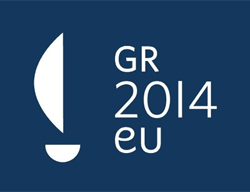‘Europe 2020 – Civic Vision’

‘Europe 2020 – Civic Vision’ is part of an initiative entitled Interacting with the European Parliament, which is implemented by Bulgarian non-governmental organisations European Institute and Centre for Policy Modernisation with the financial support of DG Communication of the EP.
The book offers a summary of the two-year campaign that aimed at promoting the interaction between the European citizens and the European Parliament, the only European institution elected directly.
The book also seeks to trace out the way ahead and the role of citizens and civic organisations in building up united Europe in the context of debating Europe’s future. It is the authors’ conviction that the formulation of any long-term perspective of the European Union should come only after the present situation is realistically assessed, along with all past achievements and shortcomings, and that a shared responsibility for the future should be the point of departure towards reaching the common goals.
Laying out a vision for Europe’s future, and implementing that vision in particular, is a continuous process that will be the focus of an interactive platform for civic participation, http://parliament.europe.bg, which will urge citizens’ active involvement in all items topping the European agenda.
The publication of the book was preceded by an international conference held on 29-30 January 2010 in Sofia, Bulgaria, on the same subject. NGO experts, academics, researchers and MEPs of different nationalities had the opportunity to discuss together what Europe should look like in 10 years’ time so that it lives up to citizens’ expectations in the most correct and adequate way possible.
The first part of the book ‘Europe 2020 – Civic Vision’ is dedicated to the European Union in 2010: the year that marks the beginning of a historic new stage in the common development of the EU and its Member States. Europe’s unification, the Treaty of Lisbon, the EU institutions and European Parliament’s role are all touched upon. The highlights of the second part are the main challenges to the development of the Union. Among them is greater involvement of the citizens, more visibility of the EU decisions in the Member States, and the so-called "transnationalisation", that is, the public spheres in the Member States to be more open to each other. The third part of the book is taken up by Europe in 2020: European democracy, European identity and solidarity in the EU as shared responsibility for development.
What should the European Union look like in 2020?
The whole world, the European Union and the Member States are experiencing the consequences of the first global financial and economic crisis in the 21st century, which must be overcome by means of not just pragmatic solutions but also fundamental changes in the way we think, act and communicate being citizens of Europe. What clearly stands out amidst the crisis is the need to reconsider and ponder over our values: freedom, democracy, equality, the rule of the law principle, and recognition of the human rights, including the rights of minorities.
inding a way out of the crisis is no doubt a top short-term priority; however the European Union also needs a long-term perspective for its development not only as an economic and social union but also as a real union of the peoples of Europe.
The enhanced opportunities for interaction between the European citizens and the European Union institutions should find their adequate expression, which includes more efficient use of modern technologies. Civil society’s input to the process of determining – and accomplishing – the Union’s development goals may become a new driving force for the European project. Therefore we should be sufficiently committed and daring to voice our own opinions and viewpoints before the national governments and the European institutions.
In 2020 Europe could be more cohesive, stronger and a more significant factor in the world, if it incarnates in its daily life the idea that, in order to be meaningful, the national and European institutions should utilize the citizens’ energy in their activities. The civil society in turn should depart from the role of a beneficiary and become an active participant in the achieving of the common goals.
Therefore, the driver of Europe throughout the next decade will be the interaction among the citizens; between the citizens and the national governments; among the national governments and between the citizens and the European institutions, each using their own mechanisms as generator of ideas, unification of resources and accomplishment of the common missions.







 Svejo
Svejo Twitter
Twitter Link4e
Link4e Pipe
Pipe Web-bg
Web-bg Bghot
Bghot Lubimi
Lubimi Novinitednes
Novinitednes Ping
Ping Facebook
Facebook Myspace
Myspace Mix
Mix Del.ico.us
Del.ico.us Reddit
Reddit Digg
Digg Stumbleupon
Stumbleupon Myweb Yahoo
Myweb Yahoo Google Bookmarks
Google Bookmarks Google Buzz
Google Buzz

